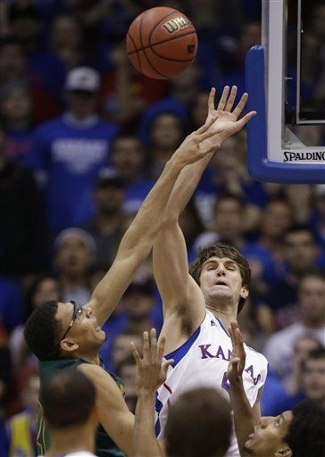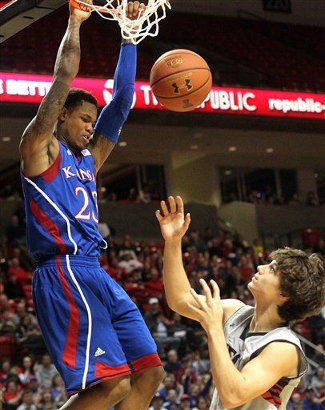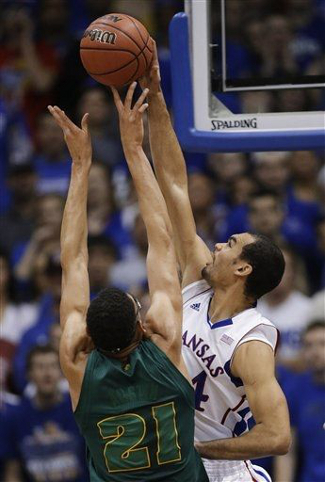#4/4 Kansas Jayhawks (15-1 overall, 3-0 Big 12) at Texas Longhorns (8-8, 0-3)
Erwin Center | Austin, TX | Tip: 1 P.M. CT | TV: CBS
LRT Consecutive Game #237
The last time the Texas Longhorns started conference play with an 0-4 mark, the team missed the NCAA tournament and Coach Tom Penders lost his job. It has been more than 14 years since that disastrous season, and the Longhorns have appeared in every NCAA tournament since then under Coach Rick Barnes. With this year’s squad sitting at 0-3 in the Big 12 and an incredibly talented Kansas team coming to the Erwin Center this afternoon, the chances are good that the Horns will be matching that disappointing start.
Although the Longhorns suffered a pair of their conference losses in overtime, they have yet to face a team as skilled as Kansas. The Jayhaws have won 14 straight games after losing to Michigan State in the Champions Classic, with their 12 non-conference wins coming by an average of more than 20 points.
While the number alone is impressive, considering the strength of KU’s non-conference schedule only makes it more extraordinary. Although the non-con slate included the likes of Southeast Missouri State, American, and Chattanooga, Kansas also knocked off good mid-majors in Belmont and Richmond, blew out Colorado, and defeated Ohio State on the road.

Jeff Withey anchors KU’s imposing interior defense
(Photo credit: Orlin Wagner/Associated Press) 
Ben McLemore is one of the nation’s best freshmen
(Photo credit: Stephen Spillman/Associated Press) 
Perry Ellis is a promising freshman for Kansas
(Photo credit: Orlin Wagner/Associated Press) |











